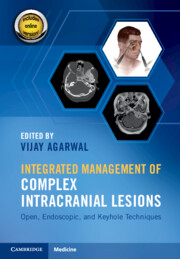Section I - Endoscopic Endonasal (EN) Combined Approaches
Published online by Cambridge University Press: 05 October 2021
- Type
- Chapter
- Information
- Integrated Management of Complex Intracranial LesionsOpen, Endoscopic, and Keyhole Techniques, pp. 1 - 50Publisher: Cambridge University PressPrint publication year: 2021



